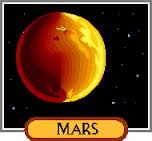![r_2014sustainablediets_b[1]](https://ntis.scienceblog.com/files/2014/03/r_2014sustainablediets_b1.jpg) There is a long and rich history of government public health efforts to educate and inform the public about nutrition and healthy eating. The first daily food guide, published in 1916, paved the way for a host of scientific documents, reports, brochures, symbols, and educational campaigns, including the Basic Seven Foods, the Food Guide Pyramid, and the Nutrition Facts panel. As a result of efforts such as these, Americans today have access to more information about nutrition than any previous generation. And yet the nation is facing a crisis of obesity and diet-related chronic diseases. Although there are many factors that influence what and how Americans eat, it is clear that there is a disconnect between dietary recommendations and actual consumption. Most of the front-of-package (FOP) systems that have been developed to date follow in the tradition of providing consumers with nutrition information. The use of such systems implicitly assumes that consumers are receiving appropriate nutrition information, whose impact can be enhanced by making it more prominent (i.e., putting it on the front of packages) and by delivering it more concisely. After reviewing evidence and perspectives from a wide range of disciplines, the committee came to a different conclusion.
There is a long and rich history of government public health efforts to educate and inform the public about nutrition and healthy eating. The first daily food guide, published in 1916, paved the way for a host of scientific documents, reports, brochures, symbols, and educational campaigns, including the Basic Seven Foods, the Food Guide Pyramid, and the Nutrition Facts panel. As a result of efforts such as these, Americans today have access to more information about nutrition than any previous generation. And yet the nation is facing a crisis of obesity and diet-related chronic diseases. Although there are many factors that influence what and how Americans eat, it is clear that there is a disconnect between dietary recommendations and actual consumption. Most of the front-of-package (FOP) systems that have been developed to date follow in the tradition of providing consumers with nutrition information. The use of such systems implicitly assumes that consumers are receiving appropriate nutrition information, whose impact can be enhanced by making it more prominent (i.e., putting it on the front of packages) and by delivering it more concisely. After reviewing evidence and perspectives from a wide range of disciplines, the committee came to a different conclusion.
For more info please go to: http://www.ntis.gov/search/product.aspx?ABBR=PB2012104389 or call NTIS 1-800-553-6847 Mon – Fri 8am – 5pm
est.
| Personal Author | A. Yaktine A. H. Lichtenstein E. A. Wartella R. Nathan | |
![images[8]](https://ntis.scienceblog.com/files/2014/03/images8.jpg)

![images[3]](https://ntis.scienceblog.com/files/2014/03/images3.jpg)
![images[1]](https://ntis.scienceblog.com/files/2014/03/images1.jpg)
